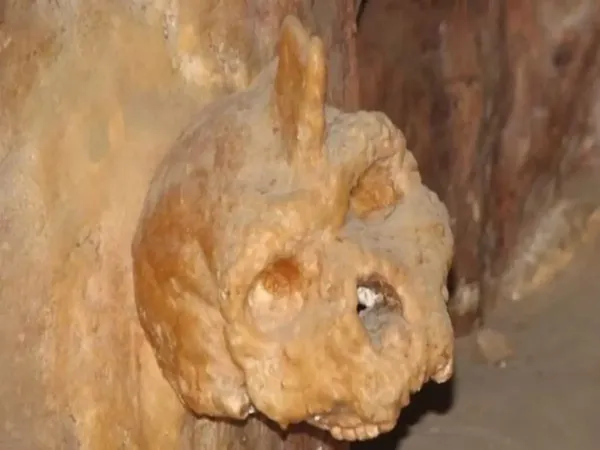
Revolutionary Discovery: 300,000-Year-Old Skull Reveals Secrets of Our Ancestors
2025-08-31
Author: Jia
A Skull That Changed Everything
After 60 long years, scientists have cracked the case of a mysterious skull discovered in 1960. Uncovered in the ancient Petralona Cave of northern Greece, this 300,000-year-old relic has finally found its place in the history of human evolution.
Unveiling the Past with Cutting-Edge Science
Initially thought to date back between 170,000 and 700,000 years, modern techniques have provided new clarity. Using uranium-thorium dating, researchers revealed that this ancient skull is approximately 286,000 years old. Significantly, this finding aligns with earlier studies suggesting that the individual belonged to the extinct Homo heidelbergensis, a species that coexisted with Neanderthals.
Meet 'Petralona Man'
Detailed examination of the skull's size and structure has led scientists to classify it as a male, dubbing him 'Petralona Man.' This classification emphasizes its distinct ancestry—belonging to a more primitive group than both Homo sapiens and Neanderthals.
The Evolutionary Enigma
The Homo heidelbergensis species, known to have thrived between 300,000 and 600,000 years ago, potentially migrated from Africa to Europe around 500,000 years back. The recent study highlights that the Petralona hominin was part of this unique lineage, adding depth to our understanding of human evolution during the Middle Pleistocene.
Exploring Petralona Cave
The Petralona Cave, located roughly 50 km from Thessaloniki in Greece's Chalkidiki, is not just a scientific treasure trove. Formed in Upper Jurassic limestone, this historical site features an extensive horizontal karstic network, making it an archaeological hotspot.
A New Chapter in Human History
As we continue to unravel the secrets held within ancient bones, the discovery of Petralona Man offers a thrilling glimpse into our evolutionary past, reminding us of the complex tapestry that shaped humanity.





 Brasil (PT)
Brasil (PT)
 Canada (EN)
Canada (EN)
 Chile (ES)
Chile (ES)
 Česko (CS)
Česko (CS)
 대한민국 (KO)
대한민국 (KO)
 España (ES)
España (ES)
 France (FR)
France (FR)
 Hong Kong (EN)
Hong Kong (EN)
 Italia (IT)
Italia (IT)
 日本 (JA)
日本 (JA)
 Magyarország (HU)
Magyarország (HU)
 Norge (NO)
Norge (NO)
 Polska (PL)
Polska (PL)
 Schweiz (DE)
Schweiz (DE)
 Singapore (EN)
Singapore (EN)
 Sverige (SV)
Sverige (SV)
 Suomi (FI)
Suomi (FI)
 Türkiye (TR)
Türkiye (TR)
 الإمارات العربية المتحدة (AR)
الإمارات العربية المتحدة (AR)